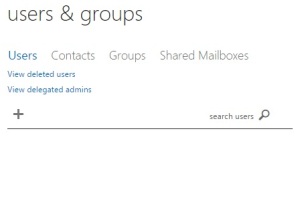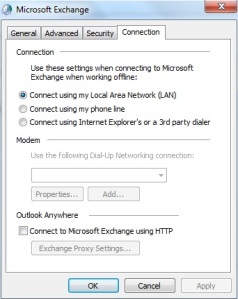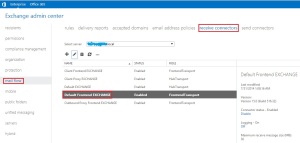Resolving Outlook Anywhere issues can some time be very tedious. The best tool you can use to troubleshoot or test Outlook Anywhere is Microsoft’s own Remote Connectivity Analyzer available at https://testconnectivity.microsoft.com.
The interface is shown below:

To test Outlook Anywhere, you can select the Outlook Connectivity option selected above and click Next.
On the next page fill the text boxes as shown in the below screenshot.
Note:- If you have configured Autodiscover for Exchange, select the ‘Use Autodiscover to detect server settings‘ option to automatically detect your server or otherwise select ‘Manually specify server settings‘ to provide the settings manually. Also, when providing the settings manually make sure that under Exchange Server mention the internal hostname of the Exchange Server. Specify the type of Authentication configured either Basic or NTLM.
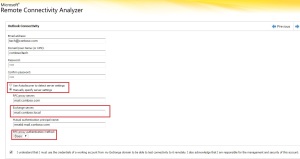
The connectivity analyzer will now perform a series of tests. There will be a slight difference in the tests if you have selected to detect the server using Autodiscover or manual settings. For manual settings the tests will be in the order:
- Resolve the external hostname of the Exchange Server in DNS
- Check and confirm that TCP port 443 is listening and open
- Check the validity of the SSL certificate
- Check the IIS configuration for client certificate authentication
- Check the configured authentication mechanism eg: Basic, NTLM, Negotiate
- Check valid ports 6001, 6002, 6004 etc..
In case of Autodiscover, the tests will be:
- Test the Autodiscover URL, https://url:443/Autodiscover/Autodiscover.xml
- Resolve the external hostname of the Exchange Server in DNS
- Check and confirm that TCP port 443 is listening and open
- Test the autodiscover URL, https://url:443/Autodiscover/Autodiscover.xml
- Resolve autodiscover.servername in DNS
- Check the presence of SRV record in DNS
- Check the presence of autodiscover cname record in DNS… etc..
If the server configurations are correct you will receive a notification that ‘The Outlook Connectivity test completed successfully.‘ else a failure message will be reported with the exact error.
One of the error I received recently is as shown below:
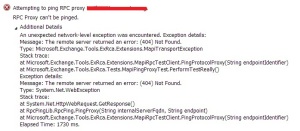
Troubleshooting the Exchange Server :
- In the Exchange Server, check and confirm that RPC over HTTP Proxy feature is installed

- Confirm the presence of a valid SSL certificate, and the name of the certificate is similar to the external hostname configured for Outlook Anywhere


- Check the authentication configured for Outlook Anywhere and confirm its the same from Exchange Management Shell and in IIS
- Check and confirm that the RPC Proxy server uses the valid ports for RPC over HTTP. From registry editor, navigate to HKEY_LOCAL_MACHINE\SOFTWARE\MICROSOFT\RPC\RPCPROXY.
Make sure the data in the ValidPorts key is as follows :
NETBIOS:6001-6002;FQDN:6001-6002;NETBIOS:6004;FQDN:6004
The NETBIOS name and FQDN of the exchange server is required in this area.

- Check and confirm that the authentication configured for the RPC virtual directory is IIS. This should be same as the authentication type configured for Outlook Anywhere

Once the above settings are verified, you can test the Outlook Anywhere connection either by configuring Outlook on an external machine or by using Remote Connectivity Analyzer.
For steps to test Outlook Anywhere on your machine make use of this link .
In order to test Outlook Anywhere configuration from powershell use the command “get-outlookanywhere | fl” etc…
Reference : http://www.msexchange.org/articles-tutorials/exchange-server-2003/migration-deployment/Implementing-RPC-over-HTTPS-single-Exchange-Server-2003-environment.html









